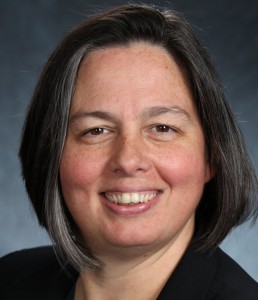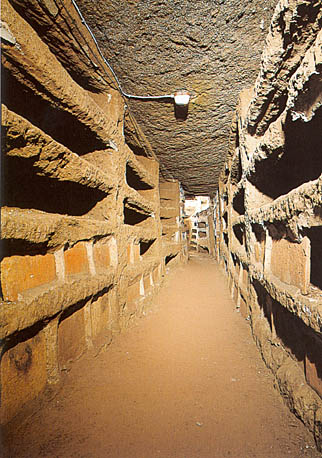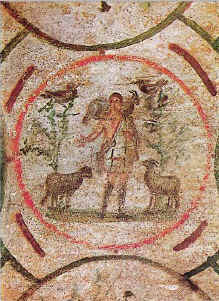 Dr. Dana Dillon is the Faculty Resident Director for the Providence College/CEA Center for Theology and Religious Studies in Rome for 2011-2012. She's also an assistant professor of theology at Providence College.
Dr. Dana Dillon is the Faculty Resident Director for the Providence College/CEA Center for Theology and Religious Studies in Rome for 2011-2012. She's also an assistant professor of theology at Providence College.
The Providence College/CEA Center for Theology and Religious Studies is based at the
CEA Global Campus in Rome.
Here's an extract from Professor Dillon's blog, where she regularly reports from Rome on what's going on at the Center.
A Visit to the Catacombs
 To bring the history and the scripture to
life, and to take advantage of our location, we had class today at the Catacombs of St. Priscilla.
To bring the history and the scripture to
life, and to take advantage of our location, we had class today at the Catacombs of St. Priscilla.
Our class continued its journey through St. Paul's letters, with his letter to the Christian community right here in Rome. It's kind of amazing to read (or re-read) these words in the very place where they were first read, where they were received not as scripture, but as a letter from our friend Paul, written to encourage us in the Christian life.
The thing about these catacombs, though, that is nearly impossible to convey through text is their incredible expanse. By law, no one could be buried within the city limits of Rome, so there were burial sites outside of town. Many pagan Romans cremated their dead; since Christians and Jews did not, most of the burial sites belong to Christians, and some to Jews. These particular catacombs (Priscilla) were used to bury Christians as early as the 2nd century. By the 4th century (with the legalization of Christianity), it became a site where thousands were being buried. Over the course of a little less than 300 years, more than 40,000 people were buried here. This occurred in 3 separate levels, where each level has many corridors with spaces for bodies from floor to ceiling on both sides. If you walked each and every corridor, you would walk about 13 kilometers (that's about 8 miles!). Quite a few of those 40,000 were popes or martyrs, but many were just run-of-the-mill Christians, doing their best to live lives worthy of the gospel.
There are also several spaces that are more like larger mausoleums or chapels and gathering spaces. Just in case you've ever heard the stories that Christians actually hid out in the catacombs, living in them in the days when Christianity could get you killed, that's not true. These were simply burial sites. But the size of them makes it easy to see why people imagined that someone might have lived down there, and been able to hide for years in this network of tunnels and corridors from anyone who might have come looking.

The ancient artwork present here really gives one a taste of what was important to the early Christians in Rome. The most ancient portrayal of Mary (holding the Christ-child) is found on these walls (it dates to around 200 AD). There are pictures of Christ the Good Shepherd, of Jonah and the whale, of the binding of Isaac, of peacocks and doves and phoenixes. There are little marks on some of the graves--fish, the Chi Ro, olive trees. Little marks offered like prayers, connecting the deceased to Christ and the Christian community. And the excavations have also revealed that it was very common for mourners to fill little lamps with oil and leave them by the graves, so that their loved ones would be like the wise virgins whose lamps were still burning when the Bridegroom returned.
After our tour, we gathered together and continued our study of Paul. The letter to the Romans is some serious theology. It might reasonably be given credit (or blame) for the conversion of Augustine and the Protestant Reformation. We dove into a serious conversation about justification through faith and/or works, which was driven mostly by the text of Paul's letter. But as I think back upon that conversation and the art on those graves, I think they made the point much more clearly than what I was able to say. They marked the graves with the cross, with symbols and imagery of Christ, or with the olive tree that is the church. Righteousness matters, but our righteousness does not matter as much as the righteousness of God as revealed in Christ. Little or nothing remains in these graves of any claims to righteousness, but only the claim that these people lived and died as Christ's.
It's kind of funny. I tend to think of Rome, and especially of the catacombs as a place of martyrs and saints. It was good to be reminded that in this space and time, like in every place and every era, there were certainly martyrs and saints, but the vast majority of Christians were just ordinary folks struggling through trying (and hoping and praying) to live lives which marked them as Christ's own.
You can follow Dana's blog at pcinrome.blogspot.com










